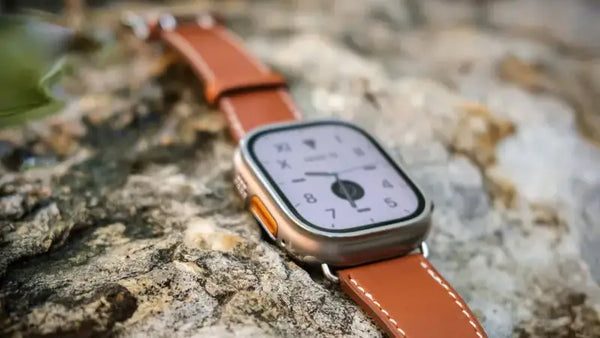The Birth of Leather Watch Straps
Historical accounts suggest that leather watch straps saw their first light of day amidst the South African Freedom Wars. Soldiers, braving the intense Veldt heat, would strap pocket timepieces to their wrists using rudimentary leather bands. However, some historians argue that this trend traces back to the Third Burmese War between 1885 and 1887.
These leather straps also offered a solution to men's hesitations about wearing what they deemed as an "effeminate wristband," by providing a rugged and "masculine" appeal.
Military Adoption and Evolution
World War I catalyzed the popularity of leather straps due to the rigorous demands of military coordination, artillery, and aviation. Leather straps, especially the military one-piece safety-pattern straps, bore a striking resemblance to the NATO or G10 straps of the 1970s.

During World War II, the use of leather straps further diversified. For instance:
- Elgin Grade 540 and 554 watches initially sported leather straps but shifted to nylon after the leather deteriorated from salt exposure.
- Longines provided the Czech air force pilots with watches that featured expansive leather bands.
- Italian divers wore Panerai watches with waterproofed leather straps.
- For the B-Uhren watches during WWII, brands like Lange & Sohne, Laco, Stowa, Wempe, and IWC integrated longer leather straps.
A Spectrum of Leather Watch Straps
Today, the market is awash with a myriad of leather watch straps, each exuding a distinct charm.
Alligator Straps: Steeped in a rich history dating back to the 1800s in North America, alligator straps symbolize luxury. The alligator leather's distinct small square scales, combined with varied tanning and finishes, makes it a staple in high-end Swiss and global watch-making.
Rally-style Straps: Drawing inspiration from race car designs, these straps originally aimed to ensure drivers' comfort during prolonged rally races. Today, their compatibility with chronograph watches makes them a popular choice.
Bund Straps: Originating from the Bundes republic of Germany during WWII, these straps offered pilots relief from the extreme cockpit temperatures. Acting as a cushion, they prevented direct contact between the metal watch and the wearer's skin.

Robert Redford in Three Days of the Condor - Doxa Sharkhunter on a Bund strap.
NATO Straps: Born in 1973 courtesy of the UK's Ministry of Defense, these were initially a military staple. Today, they're lauded for their robustness and have become a fashion icon in their own right.
The Evergreen Allure of Leather Straps
- Versatility: Whether you're donning formal attire or casual wear, leather straps effortlessly complement any outfit.
- Durability: Leather's reputation for longevity is unmatched. Even if the color fades slightly over the years, its robustness remains intact.
- Comfort: Natural leather ensures optimal comfort, adjusting to wrist movements and preventing rashes or abrasions.
- Classiness: Leather straps exude an unmatched elegance, making them a timeless accessory for any watch aficionado.
- Affordability: Contrary to popular belief, leather straps offer value for money, giving luxury at a reasonable cost.

In Conclusion
The enduring legacy of leather watch straps is a testament to their unparalleled charm, durability, and versatility. Whether for daily wear or special occasions, their timeless elegance ensures they never go out of style.
For those seeking the pinnacle of leather strap craftsmanship, Infinity Loops marries historical expertise with modern innovation. Their premium collection, inspired by Italian finesse, offers everything from superior leather NATO straps to uniquely elegant designs. Embrace the world of Infinity Loops, where quality meets timeless style.

